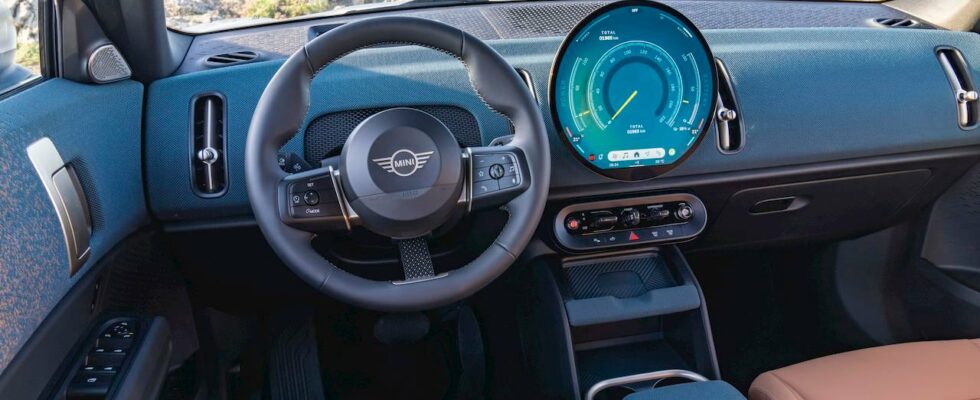On the occasion of the launch of the new electric Mini Countryman, the British manufacturer also presented its new infotainment system which is based on a large circular OLED screen measuring 24 cm in diameter. We were able to use it for a few hours, and unlike other very conventional systems, the Mini brings a real new experience on board. Discover our detailed review.
A few days ago, we were able to take charge of the new Mini Countryman in its 100% electric SE ALL4 version, equipped with two motors (one on each axle) and four-wheel drive. With 313 hp and 494 Nm of torque, the SUV from the British firm, which no longer has much of a Mini in terms of size, borrows the same platform and the same technologies as the BMW iX1 and iX2 (the latter is ‘moreover the most ordered electric BMW in France currently), while achieving, in our eyes, to be better on several points than the aforementioned German SUVs.
Generally speaking, this Mini Countryman is a real success, despite some small flaws that we highlighted in our test, particularly in terms of finishes in certain places, with a decline in perceived quality compared to previous Minis. The atmosphere is clearly geared towards minimalism, as evidenced by this huge dashboard with not much on it.
But in reality, what is obvious inside, it is obviously this large circular OLED screen of 24 cm in diameter which allows you to manage absolutely all the specificities of the car at your fingertips. As with Tesla, there is no longer a digital instrument cluster in front of you.
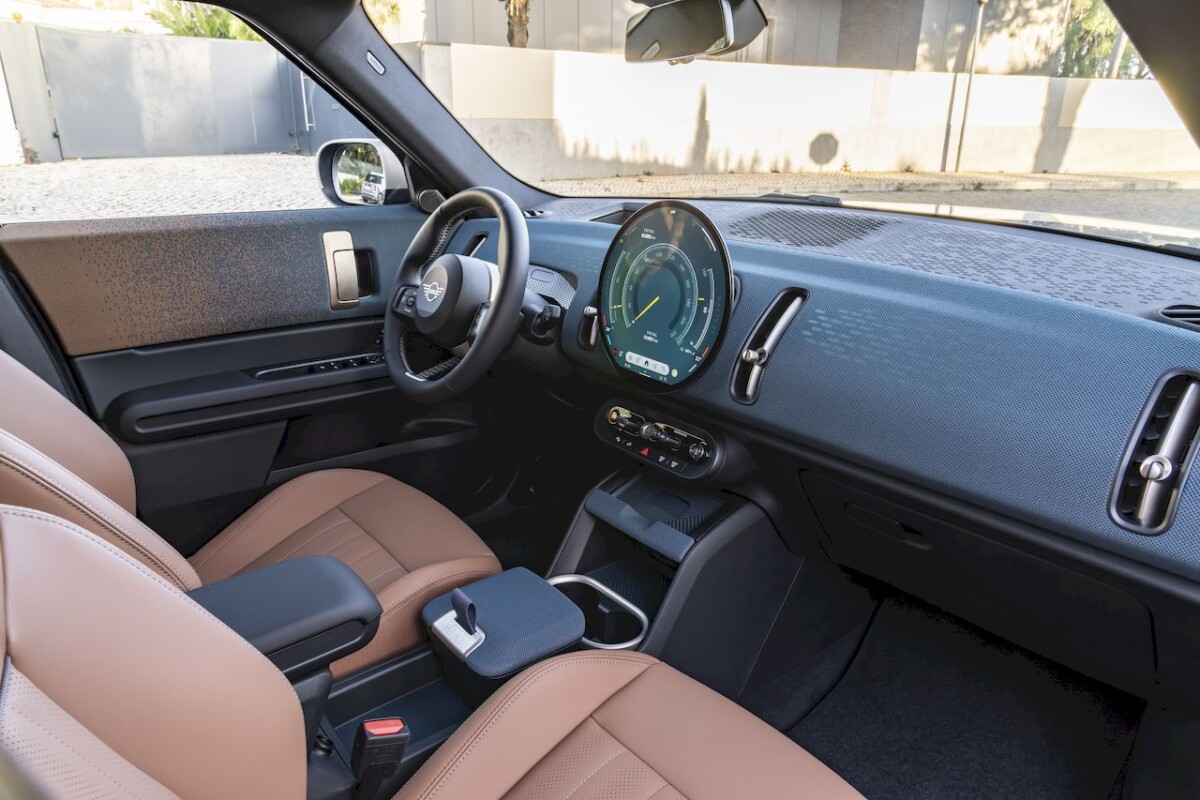
Don’t panic, there isn’t anything either, since even if the speed can be transferred to the central screen, it is also displayed before your eyes, if and only if you opt for one of five option packs (XS, S, M, L and XL) ranging from 1,260 euros to 11,160 euros which incorporates a head-up display system. Who would buy a Mini without options that said.
Even if this display is a little old school and seems far removed technologically speaking from that of Mercedes in augmented reality, it is in our eyes essential to avoid shifting your gaze towards the middle screen. For real Mini “purists” otherwise, the speed displayed in the center will remind them of the very first ones from the early 1970s.
Guaranteed “wow” effect
As stated above, Mini has chosen minimalism, which results in the general absence of physical buttons. Note the presence of a row of controls under the screen to activate forward or reverse gear, turn on the car or select an “experience”. We will come back to this below.

The big news on this Countryman, and which we will also find on all the other cars in the range, namely the future Cooper and the Aceman, is its infotainment system. This system is called Mini Operating 9 and it was developed in-house. It’s for the very first time based on Android Open Source Project (AOSP) and its technical basis is common to the BMW OS 9 system. So the old Linux system from the BMW group is over.
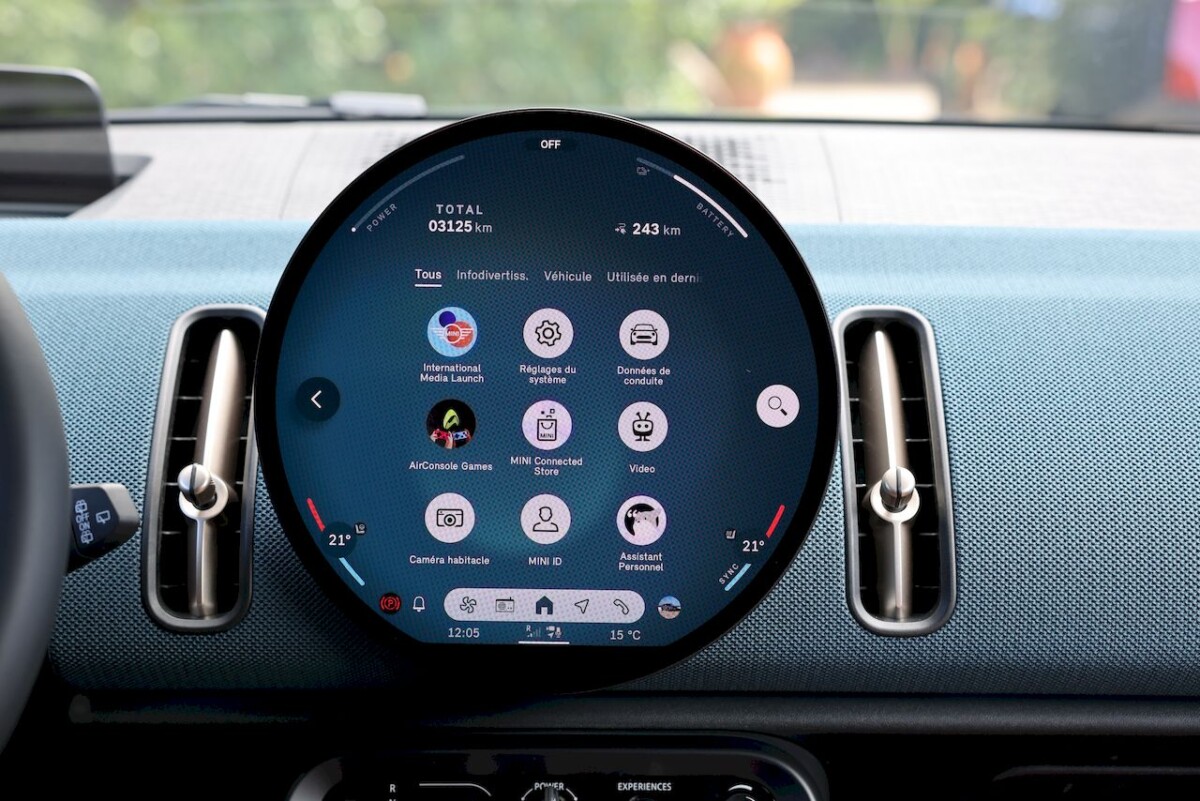
As it is an Open Source system, it will be possible to download native applications in your car, such as Waze for navigation, or even streaming applications like Plex. However, the interface is not suitable for a circular screen since we remain on a rectangular interface. Damage. This feature is only usable via a 5G subscription which costs around 10 euros per month or 100 euros per year.
A good experience at first glance
But how does it work in practice? Bad luck for us, our first test model seems a little buggy with displays that sometimes take several seconds to appear, especially navigation. Mini assures us that this is a pre-series, at least for the electric ones, so we move on to a thermal model also present and which is, this time, indeed standard. And indeed, it works much better.
Very quickly, we are reassured by the fluidity of the menus and the reaction time of the touchscreen. Overall, we get closer to the experience we have with a smartphone. There are some pretty clever shortcuts, including an icon bar at the bottom that stays fixed with navigation, media, phone and climate control. Not forgetting the Home button in the center to easily return to the main screen.
The ergonomics of the menus are all in all suitable, although not extraordinary, but it is in any case much better than BMW and its cluttered menus. Obviously, the Mini system is compatible with Android Auto and Apple CarPlay. Be careful, however, with somewhat tone-on-tone icons, it is sometimes difficult to differentiate this icon from that icon.
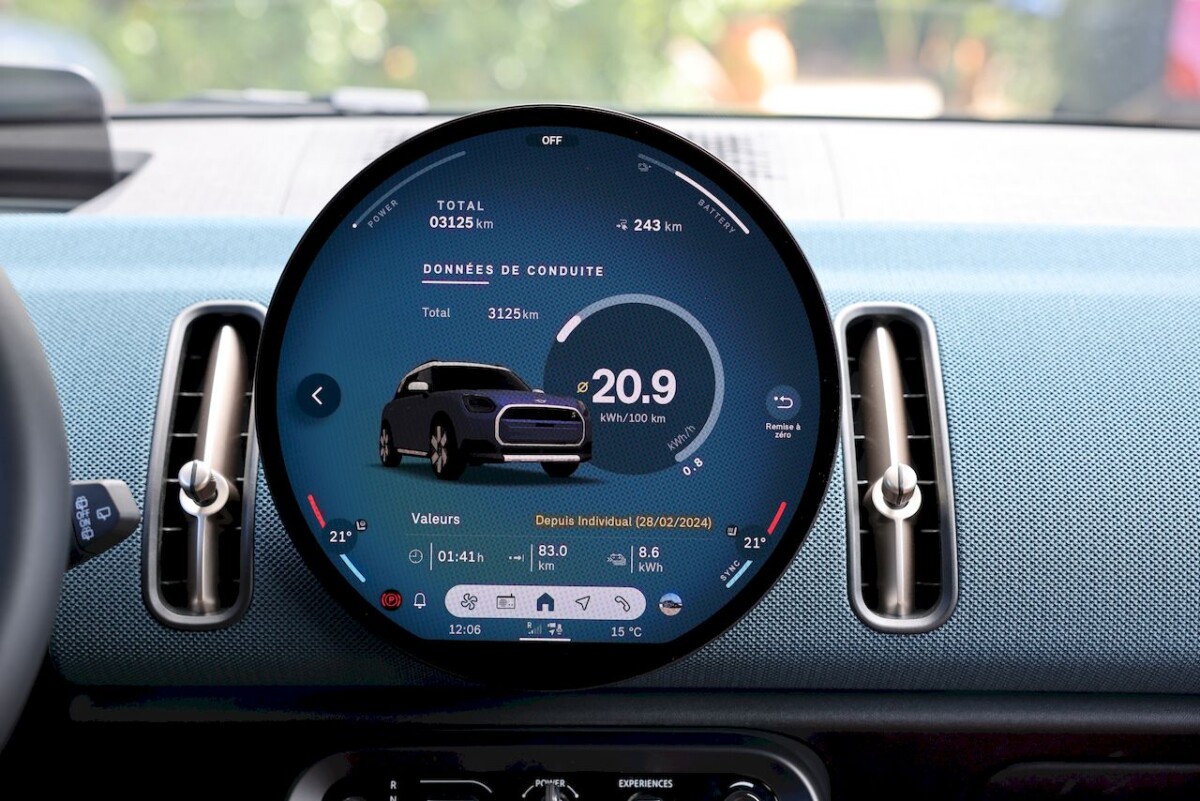
At the bottom as at the top, you can access shortcuts. Because indeed, when entering the main menu, the applications are numerous, and when you don’t yet know the car, you can quickly get lost. In swiping From the bottom of the screen to the top, you can bring up a customizable window where you can add shortcuts. On the other hand, there are still elements which remain fixed, such as for example the odometer or the remaining battery percentage.
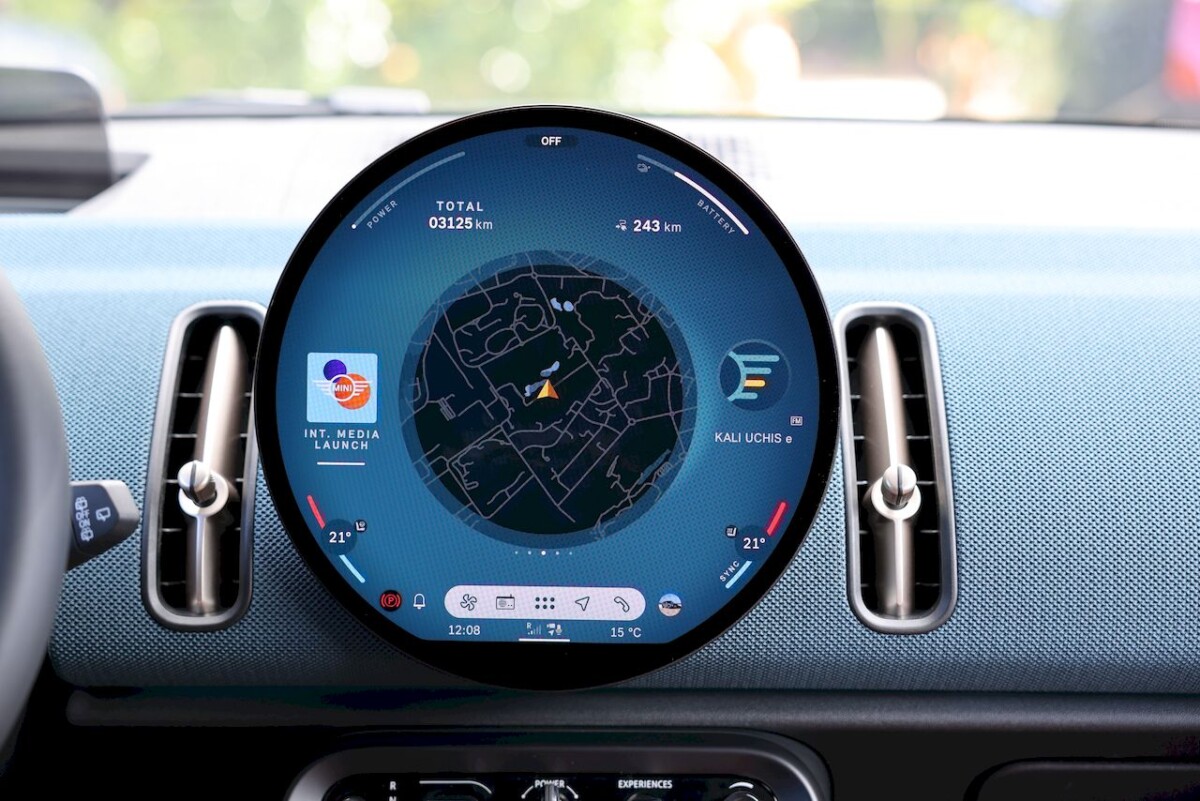
In the center, you will have, depending on what you choose, information on the current journey (consumption, average speed, etc.), the GPS which is displayed on three-quarters of the screen ensuring maximum visibility or even the media. In terms of visibility, it is generally flawless, the same for the graphics, very fine and neat. Navigation between menus is fluid. It’s only the ergonomics that fail, but nothing catastrophic.
A completely customizable system
And what would a Mini be without its fun side? Although it’s expressed through driving, inside the experience can also be really fun. The brand plays the personalization card to the fullest with different modes which influence the color of the display, for example, or the graphics. These are called “Experience Modes”, and they are selectable via a physical button in the control bar below the screen. The customization possibilities are almost endless with eight different pre-defined experiences.

From Kart mode (with Mario’s cry in Mario Kart when he activates!) which allows you to have a soundtrack worthy of a video game during dynamic driving, to a more zen mode or even one worn on the off -road, it’s very well done and quite fun. For our part, we appreciated the Timeless mode which displays a vintage counter in full screen, but still with all the information, enough to take us back a few years. At least in the mind.
To further enhance the ambiance, there is a projector behind the screen which illuminates the dashboard with patterns and colors that differ depending on the mode. Specific elements are also displayed on the OLED screen, with the possibility of displaying an image of your choice as a wallpaper for example. Image whose dominant colors will be used to be projected in the passenger compartment. It is even possible to take a photo or video from the central screen using the camera located in front of the driver. It’s a gadget, but why not, but that’s not the primary purpose of this camera, since it primarily allows you to monitor the car from your smartphone.
And precisely, what can we do with our smartphone? Quite a few things via the Mini Connected application which also allows you to remotely control certain functions of the car, such as charging or even opening and closing the doors. As with BMW, it is also possible to have a digital key on your smartphone to unlock the car and turn it on.
This key can be shared with a third party by simply sending it to them, and it can fit behind the wheel of your car once received. All the details of this system can be found in our dedicated file.
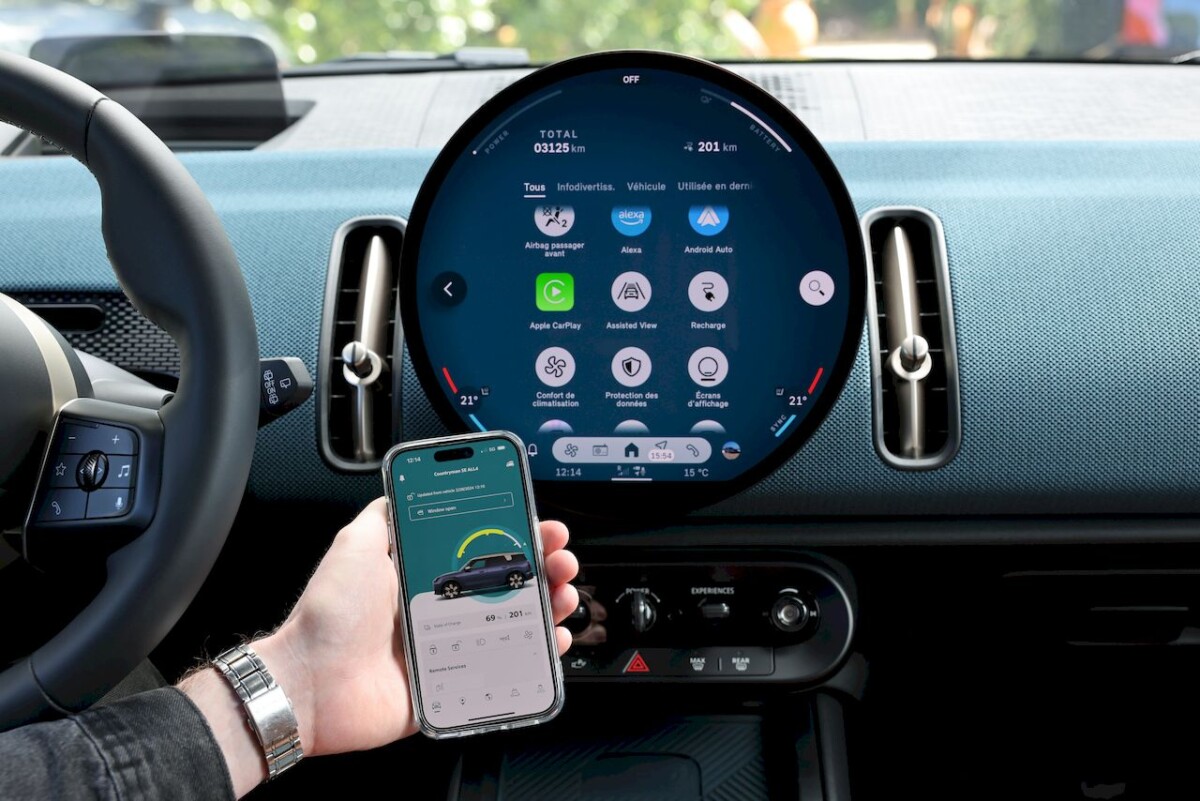
Coming back to the screen of our Mini, it obviously integrates voice control with a simplified smartphone-style experience by launching a “Hey Mini” to activate it. It is possible to ask it to increase or decrease the ambient temperature, to play a specific radio station or to start guidance. Alexa lends a hand to the Mini system to better “understand” natural language.
The Natural Language Understanding system is cloud-based and offers a processing speed of just seconds and easily recognizes your language. For example, ask it for the quickest way home and use the many functions of your smartphone without having to take your hands off the wheel. If your home is equipped with home automation and Alexa, it will also be possible, from your car, to turn on the lights in your living room.
Easy-to-live-with electric
Cloud-based guidance paired with a route planner. 5G connectivity is, as stated above, available as an option, and it will be able to take advantage of remote OTA updates for the software part. And does this route planner work well? It is rather complete, since it is for example possible to define the SOC (battery charge level) on arrival at the terminals, between 5 and 25%, as well as on final arrival at the destination, between 5 and 50%.
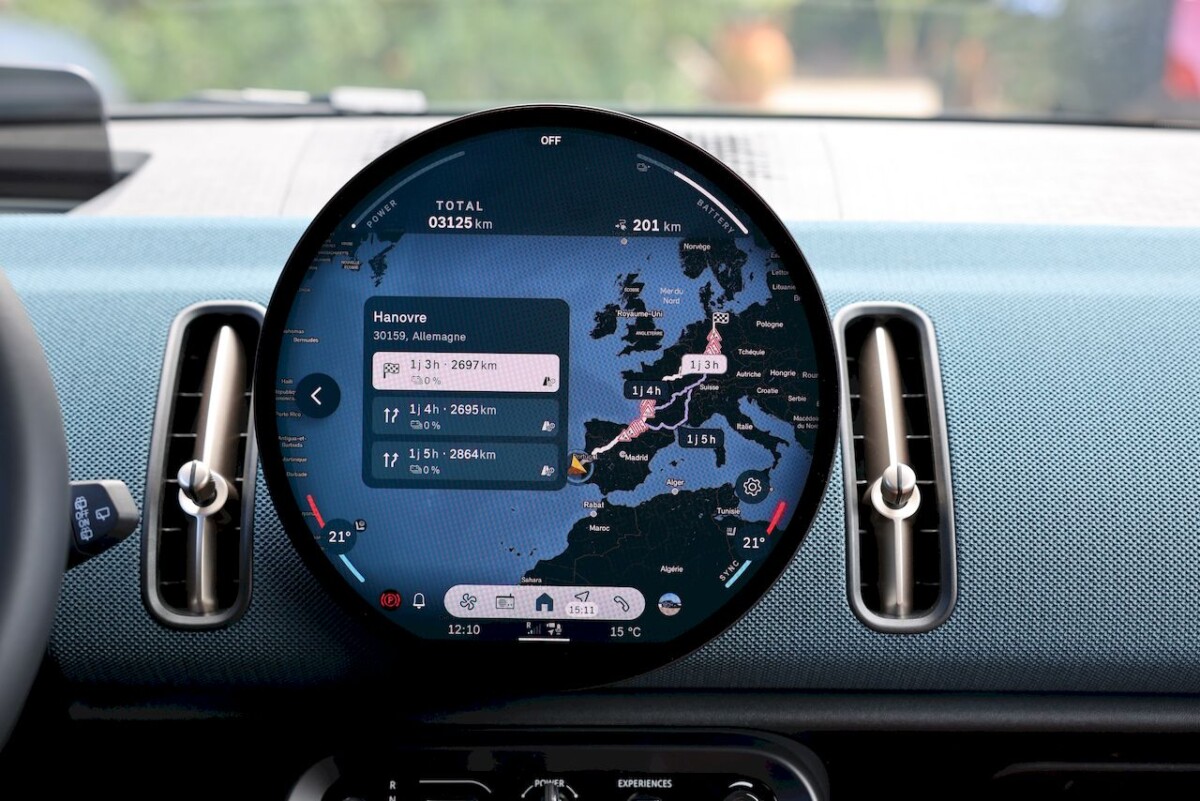
The system can then suggest alternative routes optimized for charging and displays all the useful information: remaining distance from each terminal on the route, estimated time of arrival, remaining battery percentage, charging time required, SOC level to reach and finally the estimated end of charge time. Everything is adjustable via sliders. The system then calculates the route, taking into account traffic, traffic and works reported in real time.
And for charging stops, it is possible to play video games on this screen, in particular by connecting your smartphone as a controller (the screen will display a QR Code that you will have to scan to use your phone as a controller), or with your fingertips.
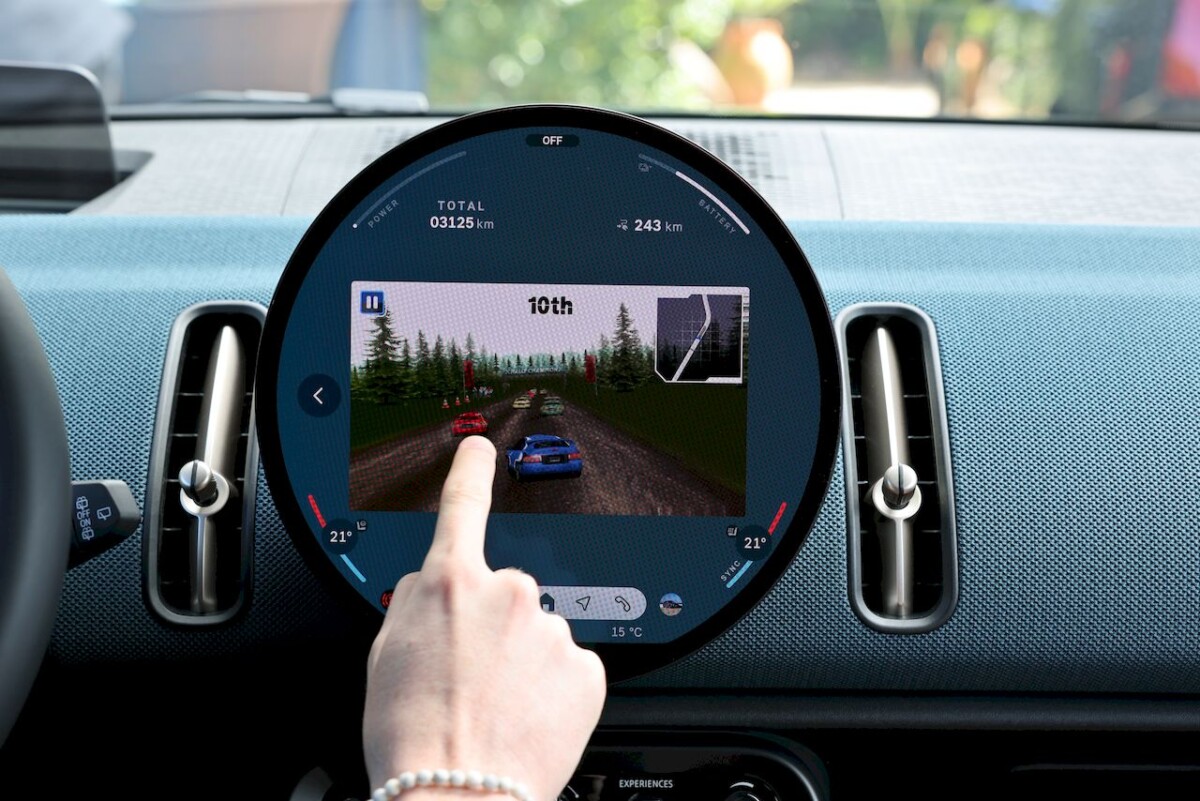
It is also possible to watch a film or series directly via the screen. specify that these functions are only activated when stoppedit will not be possible to watch a movie while driving.
The most successful system?
Overall, with Tesla’s system and that based on Google Automotive from Renault and Volvo, we are dealing with one of the best infotainment systems on the market. Good news, it will be widely available on all new electric Minis, and it will improve over time via OTA updates.
Apart from some native application display issues due to the circular screen and sometimes complicated ergonomics, there is not much to complain about this infotainment system. The switch to Android by the BMW group has made it possible to bring a lot more in terms of modernity compared to Linux.
Want to join a community of enthusiasts? Our Discord welcomes you, it is a place of mutual help and passion around tech.
